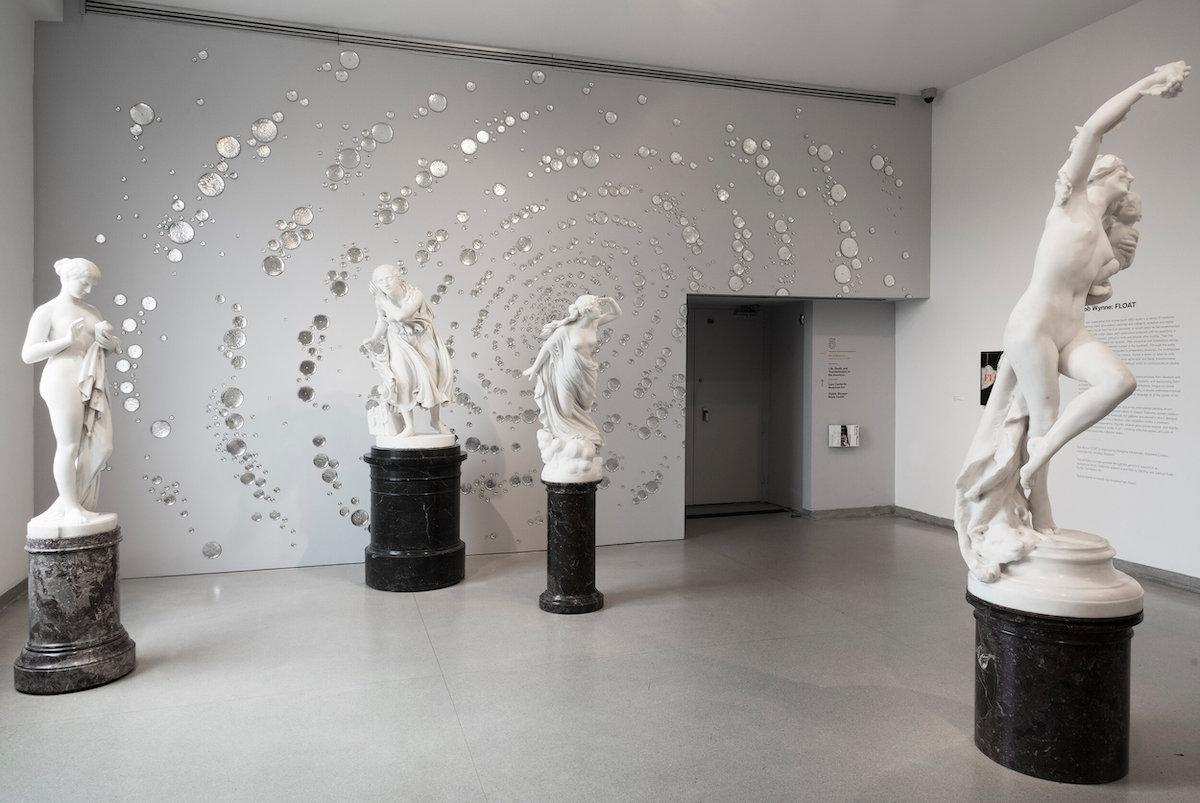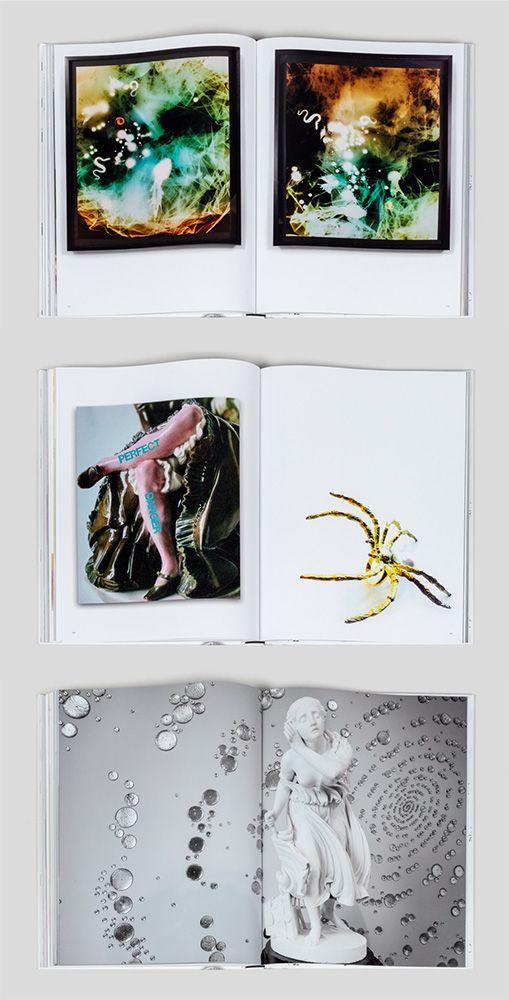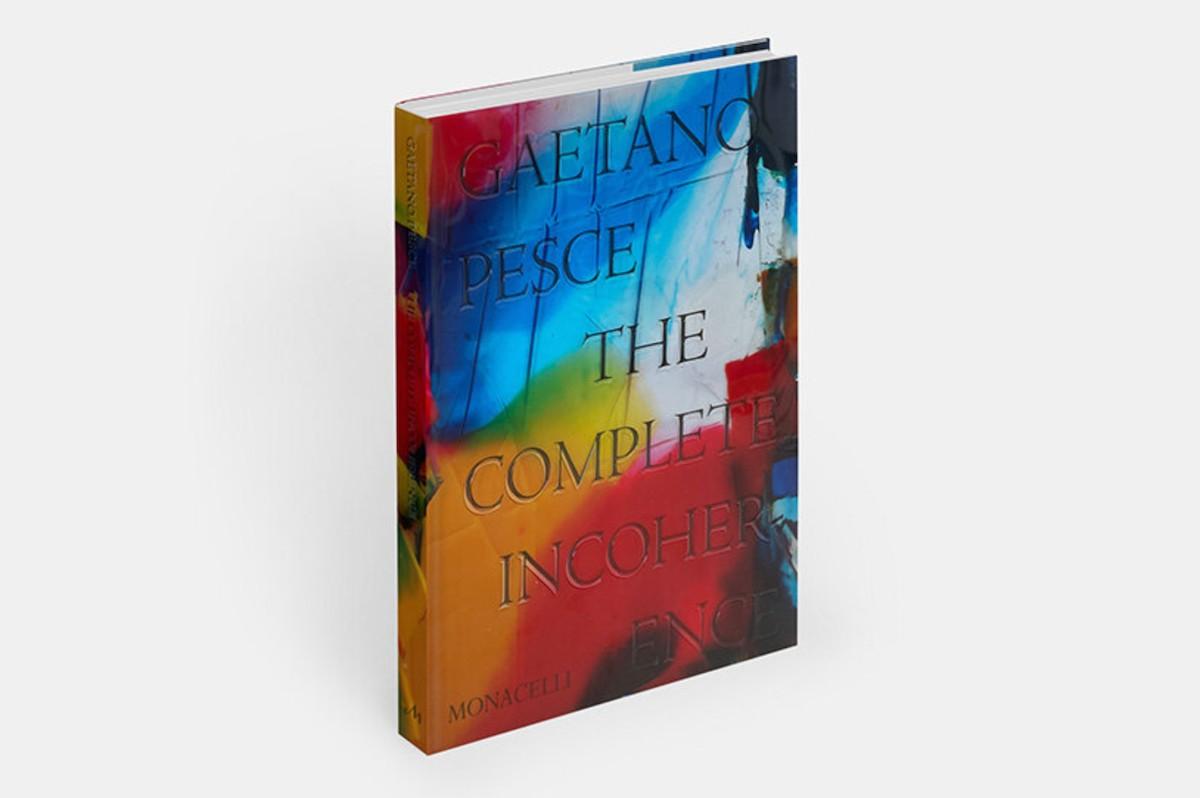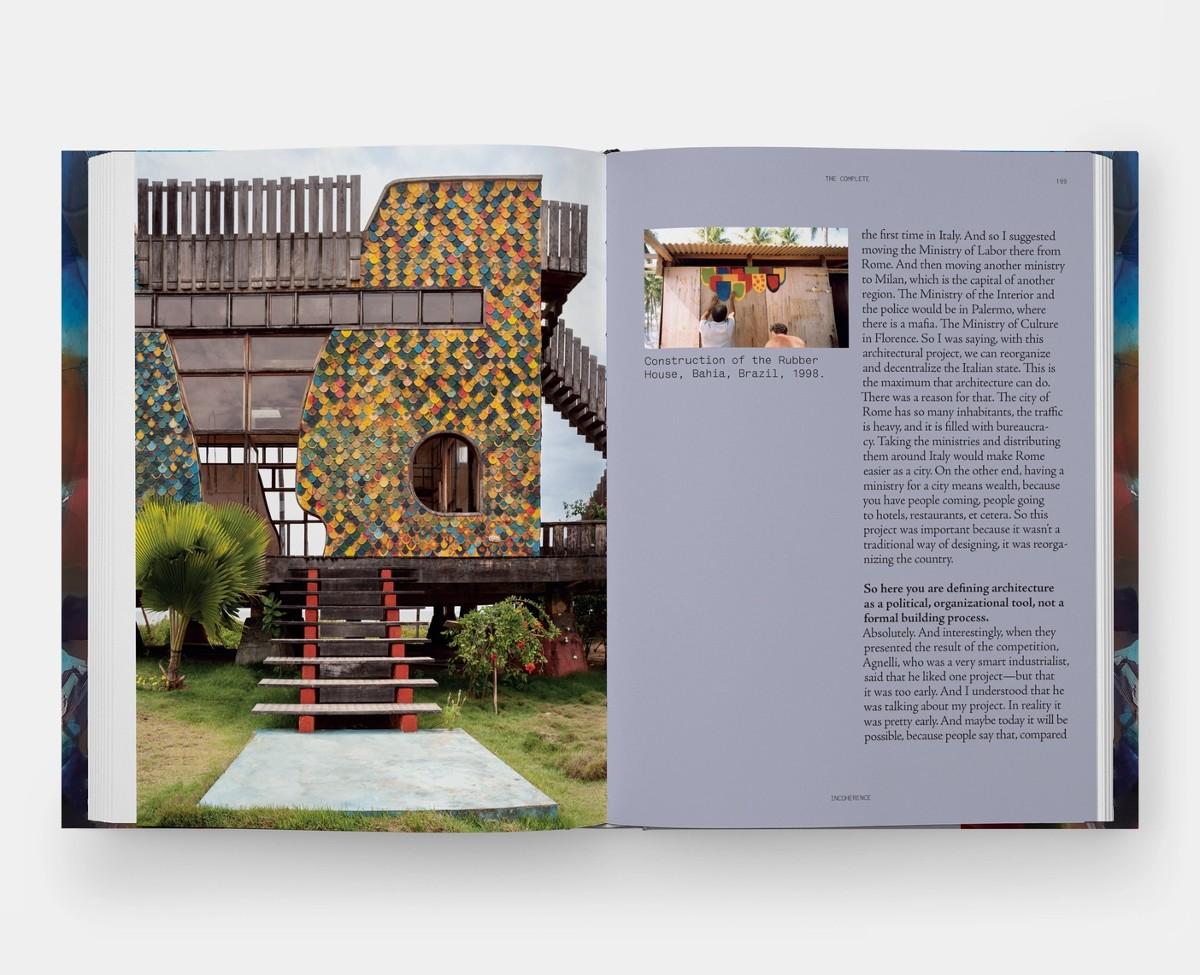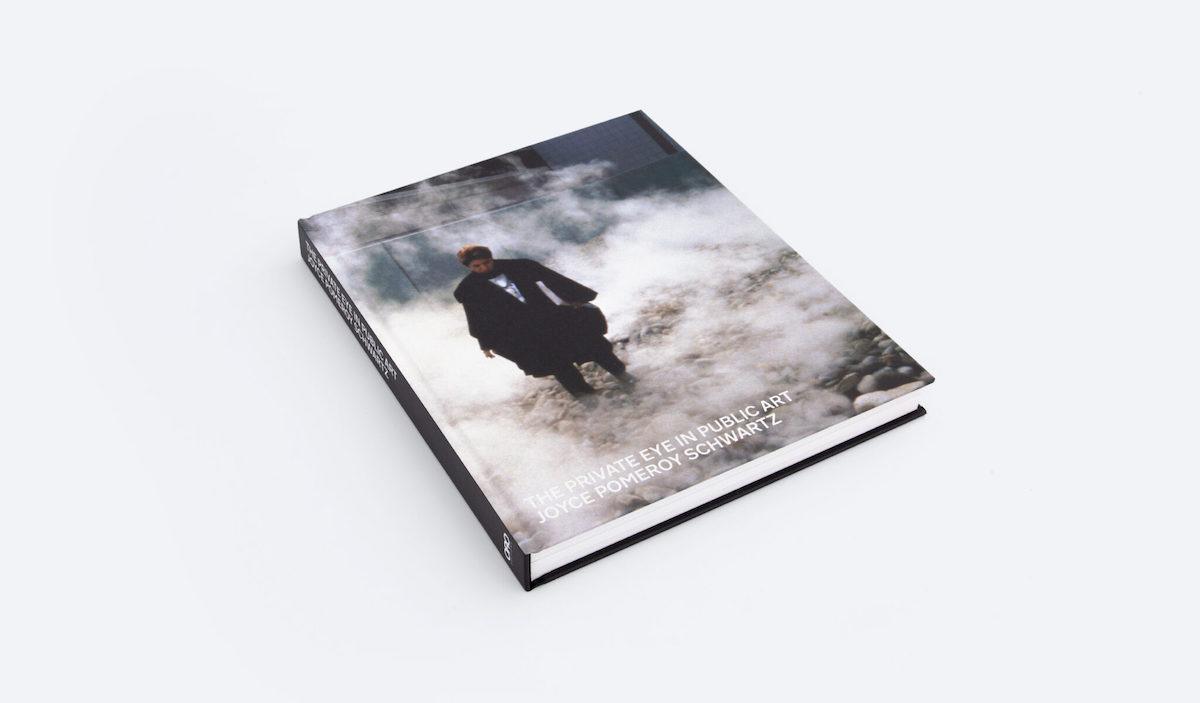Here, in these beautiful photographs, we find huge glass flies crawling up walls as well as glass buttons and spirals of seductively colored dots, mirrored glass feet, stitched and embroidered words, and much to think about. Wit and wonder are Wynne’s domain.
Filling the book are reflections by literary figures such as novelist A. M. Homes, who writes, “Wynne is not a gay artist in the sense of making art about gay identity, but he is a gay artist in that his sensibility, his comfort with his own masculinity and sexuality has given him the freedom to work with materials that some might call feminine—and not to care.” And critic and curator Michael Duncan writes, “No matter an artist’s intentions, art can subvert them.”
Most revelatory is an interview Wynne engages in with critic and novelist Linda Yablonsky, letting us see how he got from “there” to here, how he segued into abstraction and language (word) art led by the mail-art maestro Ray Johnson. He speaks of the vibrant downtown ‘70s art scene when everyone was visiting everyone’s studio and everyone was sleeping with everyone. He said, “There was a real sense of camaraderie." To say the least.
As for the book’s title, it derives from a cabdriver’s malapropism. On a rainy night, the driver looked at Wynne in the rearview mirror and said, "Did you see that? It was an obstacle illusion."




